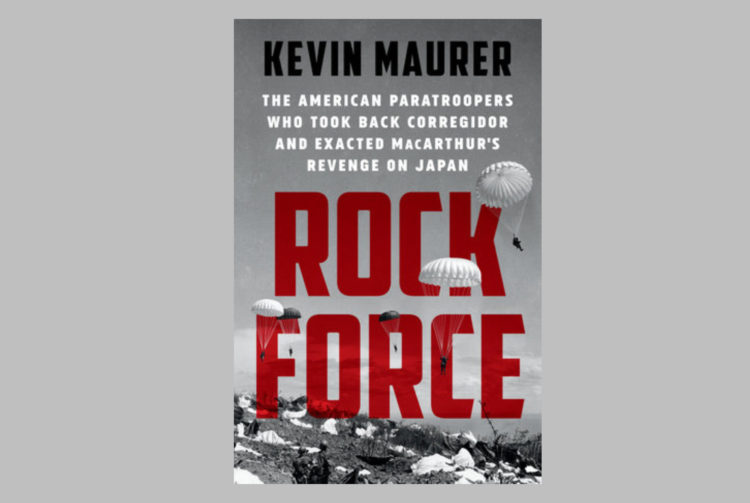For anyone who enjoys reading the history of World War II *raises hand*, then you have to check out the latest great piece of work by Kevin Maurer, “Rock Force: The American Paratroopers Who Took Back Corregidor and Exacted MacArthur’s Revenge on Japan.” It is available in physical and digital formats.
Maurer is a very experienced author. He spent time embedded with Special Forces operators in Afghanistan and with the 82nd Airborne. He also co-wrote the book “No Easy Day” with Navy SEAL Mark Owen that recounts the raid that took out Osama bin Laden. So, he knows how to tell a military story.
Corregidor, as known as “The Rock” or the “Gibraltar of the East” was the scene of one of the worst defeats in American military history. Corregidor was the largest of four fortified islands protecting the mouth of Manila Bay. It had been fortified prior to World War I with powerful coastal artillery. It was relatively small, just 3.5 miles long and 1.5 miles wide at its head, and only two miles from Bataan. Its widest elevated area, known as Topside, held most of the fort’s 56 coastal artillery pieces and installations. A labyrinth of tunnels connected the gun emplacements that housed 1,000 troops and a hospital.
After the Japanese bombed Pearl Harbor and invaded the Philippines, Corregidor came under siege from December 29, 1941, through April 1942. After the fall of Bataan, the Japanese landed troops on Corregidor. The bloody fighting continued until May when General Jonathan Wainwright, who commanded the American and Filippino forces after General MacArthur’s evacuation, surrendered.
By late 1944, the war had turned and MacArthur was leading a monumental, but unnecessary, campaign to retake the Philippines. Thus, retaking “The Rock” was of huge symbolical importance to the Americans.
The Japanese were expecting the Americans to land by the sea, where they had sustained heavy casualties in 1942. But instead, the Americans were going to take Topside by vertical envelopment using airborne troops of the 503rd Airborne Infantry Regiment.
It was risky. The drop zone was narrow and filled with obstacles due to the American bombing campaign. The C-47 transport aircraft could only drop a few paratroopers at a time and then had to circle back for the remainder. A seaborne invasion with ground troops would follow. The Americans expected heavy casualties among the airborne troops.
Over 3,000 men of the 503rd dropped on the small island fortress. They took the Japanese completely by surprise and the Americans immediately seized the high ground. Then came the grim task of rooting over 4,500 determined Japanese defenders, including Japanese Marines, out of the tunnels. When the fighting was done, 228 Americans of the 503rd were killed and 727 wounded. Of the Japanese defenders, 4,497 were killed with just 119 taken prisoner.
Maurer does a fantastic job of blending the big picture of the operations with the personal accounts of the brave paratroopers who fought there. He doesn’t offer a sanitized version of the combat. Rather, he takes the reader into the firefights as paratroopers hear bullets crack by their heads, watch their friends get wounded or killed, and experience the sights and awful smell of the mounds of the dead who littered the valleys of the battlefield. So strong was the odor of death that sailors offshore could smell the stench.
He tells the personal stories of a number of soldiers: Among them, Lloyd McCarter, who was awarded the Medal of Honor for his heroism on the battlefield. Charlie Branford, a physician who saw the awful toll on the cost of war. Chet Nycum, who was wounded and slated for return to the States but found his way back to the unit before its next scheduled operation. And 1st LT Bill Calhoun, the platoon leader.
“Rock Force” is brilliantly written and meticulously researched. Maurer left no stone unturned in trying to weave the story of the battle while telling the stories of the men who fought and, in many cases, died there.
The book is a non-stop, action-packed, foray into our “Greatest Generation.” It is a fantastic read and should be on everyone’s reading list, especially if you are a fan of World War II history.
Look for our upcoming podcast with Kevin Maurer on SOFREP Radio.










COMMENTS
You must become a subscriber or login to view or post comments on this article.